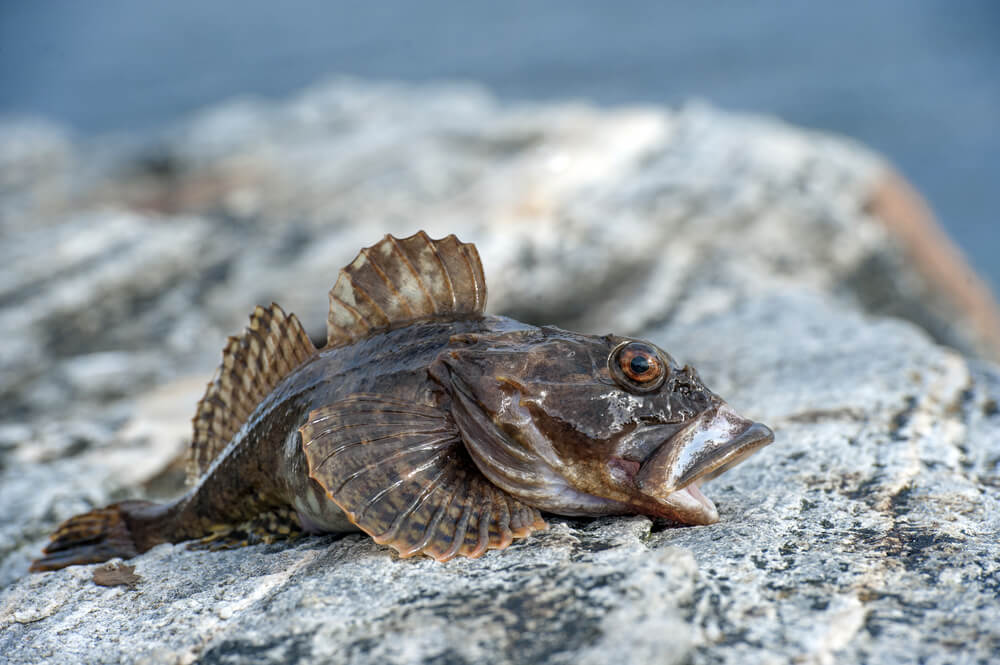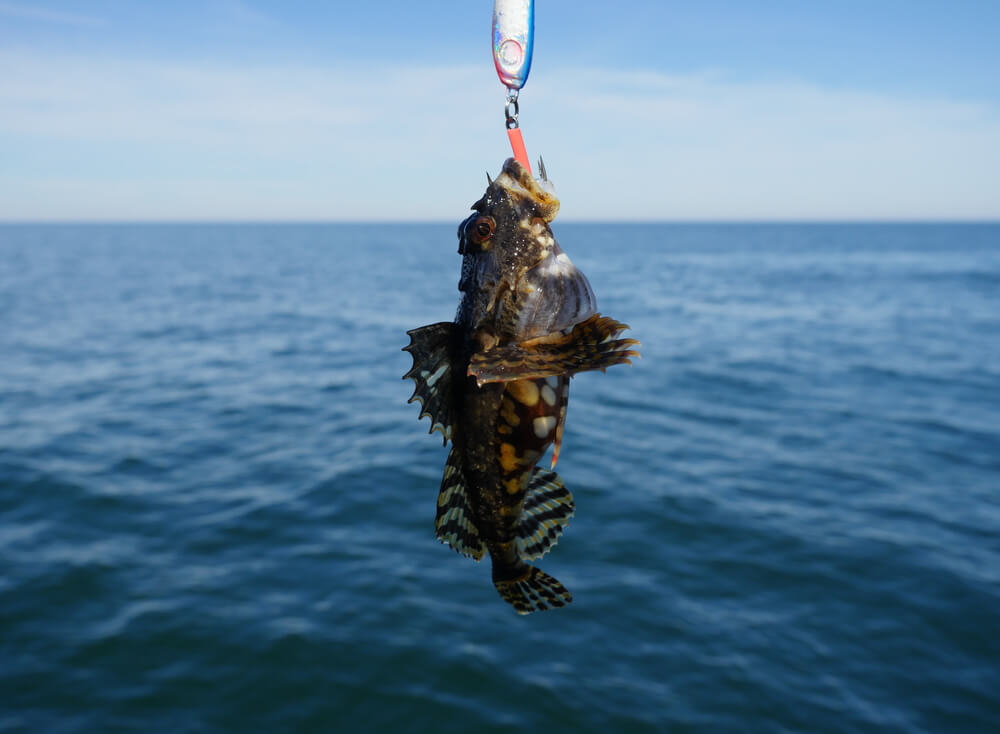The Creepy Black Seadevil

One of the fish that has attracted the most attention since its discovery has been the creepy black seadevil. This species, also known as abyssal monkfish, is a fish with a very unusual shape.
Physical characteristics of the black seadevil
The black seadevil is commonly known as abyssal monkfish or with its scientific name Melanocetus johnsonii. It belongs to the family Melanocetidae, present in different areas of the tropics.
They are also part of the order Lophiiformes, which contains representatives of the monkfishes. These fishes are present in the fossil record since the Eocene era, belonging to the Cenozoic era.
This species is characterized by living in the abyssal region of the ocean, at depths of 3000 to 4000 meters (9800 to 13000 feet). They’re easily camouflaged in this area thanks to their dark brown or dark red color.
There’s an accentuated sexual dimorphism between males and females, which is striking. First of all, females have a larger body size than males. They can reach up to one meter (3.3 feet) in length and approximately 30 kg (66 lbs) in weight. On the other hand, the length of the males is one-tenth of that of the females, and only reaches 3 cm (1.2 inches) at the most.
They have two small eyes that lose prominence to the protuberance that sprouts from the nose of the females. This protuberance, or “fishing rod”, ends in a bait full of bioluminescent bacteria, with which they attract attention.

Habitat and distribution
The black seadevil is widely distributed on the bottom of the Atlantic, Pacific, and Indian Oceans. The species Melanocetus murrayi, one of the best known along with M. johnsonii, is also found in these regions.
These two species, M. johnsonii and Melanocetus murrayi, are the best known of the entire Melanocetus genus. Of the other 20 species of monkfish that make up the genus, only one to six specimens have been found.
The black seadevil is a bathypelagic species, which means that it’s only found on the ocean floor. It’s usually found at depths greater than 1000 meters (3300 feet).
Black seadevil feeding
They’re part of the “anglerfish” family, and this name refers to a trait only present in females. Female anglerfish display a spinal protrusion that protrudes from their mouths.
This protrusion is shaped like a fishing rod and is what gives the species its name. At the end of it, there’s a luminous lure (bioluminescent bacteria), with which it attracts prey.
As soon as the prey approaches, attracted by the light, they’re caught by the large mouth of this fish. The black seadevil has such a flexible body that it can deform it and ingest prey twice as large. This evolutionary strategy has allowed them to survive in an environment where food isn’t abundant. In addition, they have a dentition composed of sharp teeth, which prevents the prey from escaping.
All in all, the black seadevil is a carnivorous fish that feeds on prey of different sizes. Thanks to its large mouth, it has no difficulty in swallowing the captured prey.
Behavior of the black seadevil
When this species was first discovered, scientists found only female black seadevils. Eventually, it was observed that the males were attached to the females, as parasites.
The male black seadevil has adopted a parasitic behavior towards the female. As soon as a young black seadevil encounters a female, it attaches itself to her with its teeth.

As time goes by, there comes a moment when the male merges with the female. He does it in such a way that he integrates his skin and circulatory system, and loses his eyes and all organs except the testicles.
Females have been observed that can carry up to a total of six or more males in their bodies. Furthermore, they need to merge with a female to survive.
The reason for this is that the male black sea devil lacks a digestive system. Without it, they cannot live independently for a long time. In addition, they have a highly developed sense of smell. Thus, they can follow the pheromone trail left by the female, as they can pick up very faint odors.
The black seadevil has been depicted as a scary fish, perhaps because of its appearance or its way of deceiving its prey. However, it’s a species with a curious evolutionary strategy, both in terms of prey capture and female-male relationship.
All cited sources were thoroughly reviewed by our team to ensure their quality, reliability, currency, and validity. The bibliography of this article was considered reliable and of academic or scientific accuracy.
-
Theodore W. Pietsch. Melanocetus, Black Seadevils [Internet]. [citado 15 de marzo de 2020]. Disponible en: http://tolweb.org/Melanocetus/22003
-
@NatGeoES. Rape [Internet]. National Geographic. 2010 [citado 15 de marzo de 2020]. Disponible en: https://www.nationalgeographic.es/animales/rape